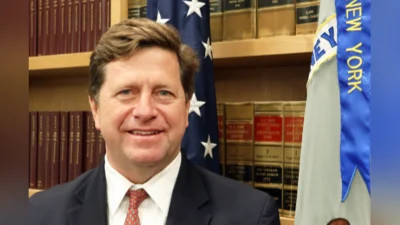WASHINGTON, DC - The Energy and Power Subcommittee, chaired by Rep. Ed Whitfield (R-KY), today held a hearing examining the impacts of major EPA regulations on the American energy and industrial sectors. Since 2009, EPA has published over 3,900 rules, totaling 33,000 pages.
These rules broadly apply across the U.S. economy, including the electricity, oil and gas, and manufacturing and industrial sectors. In addition to the agency’s “Clean Power Plan," the agency has issued over 100 greenhouse gas related rules, and other major rules affecting energy production and industrial activity. Members raised concerns that the EPA is exceeding its statutory authority and effectively becoming the nation’s energy regulator.
“Congress did not write the Clean Air Act to be the vehicle for taking command of state energy planning, the efficient and economical dispatch of electricity, or the production of oil and gas," said Chairman Whitfield. “Congress did not write the Clean Air Act to provide EPA with the ability to create new regulatory powers and authorities so it can ‘transform’ the nation’s energy system. Yet, this agency is pursuing these actions."
The Honorable Travis Kavulla, President of the National Association of Regulatory Utility Commissioners and Vice Chairman of the Montana Public Service Commission testified on the shift in how and by whom utilities are regulated, specifically as it relates to the Clean Power Plan, stating, “The EPA’s regulation creates a carbon planning function vested in the EPA together with State environmental regulators and governors. This supplants the traditional oversight of utility resource planning by State utility commissions. This step change in the regulation of utilities will have many consequences, some of which are readily apparent and some of which are as yet unforeseen."
David J. Porter, Chairman of the Railroad Commission of Texas, testified regarding concerns raised by EPA’s Clean Air Act (CAA) rules, commenting, “CAA rulemaking by EPA during the Obama administration has caused grave concern in Texas for numerous reasons. … The underlying themes in EPA rulemaking under the Obama Administration have been the consolidation of increased regulatory power in the Federal Government to the detriment of State authority, and the circumvention of the regulatory authority granted to Congress."
Lynn D. Helms, Director of the North Dakota Industrial Commission, Department of Natural Resources, testified that “the Clean Power Plan and the methane rules are going to interfere directly with North Dakota’s plan for reducing its gas flaring by limiting the power that we have available for powering those natural gas processing plants and by changing the configuration of the oil field, requiring us to add three to four times as much pipeline in the ground in order to reach these smaller pads … required under the methane reduction rules. And so they work exactly counter to the reasonable purpose of reducing flared methane and reducing methane leaks."
Charles McConnell, Executive Director, Energy and Environment Initiative, Rice University, testified that “[t]he cascade of environmental rules we have seen during this Administration has weakened energy sustainability."
Chairman Whitfield added, “Ultimately, it will be up to Congress to ensure EPA stays in its statutory lane for environmental standard setting. It will be up to Congress to take a holistic look at the statutes that govern our energy and electricity markets, and energy policy - to ensure our laws enable a growing, productive economy."
“Regulated energy producers, manufacturers, and other job creators don’t get to pick and choose which EPA requirements to comply with - they must meet them all," noted full committee Chairman Fred Upton (R-MI). “Many of the regulations on their own threaten jobs and affordable energy in Michigan and areas across the country, but it’s the cumulative effect of regulations that matters most."
For more on today’s hearing, including a background memo, witness testimony, and an archived webcast, click HERE. Related Items
* A Review of EPA's Regulatory Activity During the Obama Administration: Energy and Industrial Sectors
* #SubEnergyPower to Examine the Impact of EPA Regulations on the American Energy and Industrial Sectors





